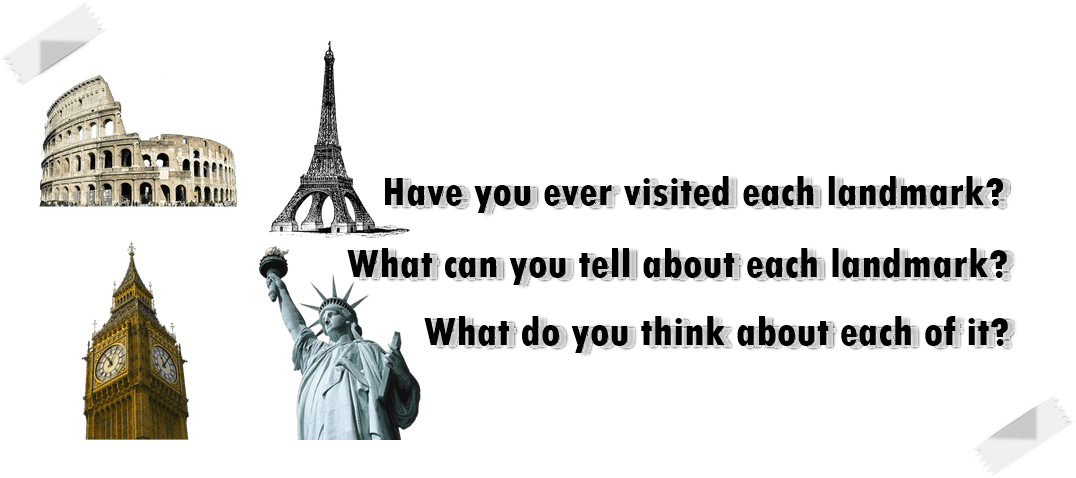Belajar Pintar Materi SMP, SMA, SMK
BelajarPintarV3
Bahasa Inggris
Text
Daftar Materi
MATERI
Descriptive Text

Descriptive text adalah teks yang bertujuan untuk memberikan informasi dengan cara menggambarkan ciri-ciri / karakteristik seseorang, benda atau tempat tertentu.
Generic Structure descriptive :
- Identification (identify phenomenon to be described). yang dimaksud dengan “indentifikasi” adalah cara penulis mengidentifikasi objek tulisannya secara umum. Apa yang sedang dibahas dalam tulisan tersebut tidaklah kasuistik, alias berlaku dimana saja asal masih dalam klasifikasi atau kelompok yang sedang dibahas itu.
- Description (describe parts, qualities, characteristics). Penggambaran dalam tulisan tentang objek yang sedang dibicarakan. Biasanya meliputi hal-hal yang membedakan dangan klisifikasi atau kelompok lainnya, misalnya habitat, sifat, fungsi dan lainnya.
Language features descriptive :
- Focus on specific participants.
- Use of attributive and identifying processes.
- Frequent use classifiers in nominal groups.
- Use of the Simple Present Tense
Example of Descriptive Text
Contoh :
Goa Gajah
Goa Gajah or Elephant Cave is located in the southwest of Bedulu village, nect to Yeh Pulu Relief, 6 km from Ubud. Known only to local villagers and the bats during centuries of neglect, the cave was revealed to the public in 1923. The bathing place was discovered and restored only in 954 during archeological investigations done by Mr. Krijgsman. It had become filled in and a temple built upon it, which had to be moved to its present site. The spring and pond there have given the temple its name -- Pura Taman.
Carved into the stone above the cave entrance is a massive face with bugling eyes and high arched eyebrows. The eyes glance towards the west or the left as you face the cave. The large ear ornaments do not necessarily indicate a female face, for male royalty also wore such ornaments. This figure represents Boma (sometimes also called Kala or Sanskrit: Kittimuka), and it is probably the earliest representation of this figure in Bali. According to Balinese texts (lontar), Boma is the son of the god Wishnu and the goddess Basundari or ibu (mother) pertiwi. Boma mau be likened to the child of water and earth, for Wisnu is the god of waters and Parwati is the goddess of the soil or mother earth.
Source: Ubud Community August 2019
1.
Goa Gajah
Goa Gajah or Elephant Cave is located in the southwest of Bedulu village, next to Yeh Pulu Relief, 6 km from Ubud. Known only to local villagers and the bats during centuries of neglect, the cave was revealed to the public in 1923. The bathing place was discovered and restored only in 954 during archeological investigations done by Mr. Krijgsman. It had become filled in and a temple built upon it, which had to be moved to its present site. The spring and pond there have given the temple its name -- Pura Taman.
Carved into the stone above the cave entrance is a massive face with bugling eyes and high arched eyebrows. The eyes glance towards the west or the left as you face the cave. The large ear ornaments do not necessarily indicate a female face, for male royalty also wore such ornaments. This figure represents Boma (sometimes also called Kala or Sanskrit: Kittimuka), and it is probably the earliest representation of this figure in Bali. According to Balinese texts (lontar), Boma is the son of the god Wishnu and the goddess Basundari or ibu (mother) pertiwi. Boma mau be likened to the child of water and earth, for Wisnu is the god of waters and Parwati is the goddess of the soil or mother earth.
Source: Ubud Community August 2019
Where is the cave Located?
A. In the south of Pacific Highway
B. Close to Numinbah valley
C. In the southwest of Bedulu village
D. Near Lamington National Park
E. At Nerang
JAWABAN BENAR
C.
In the southwest of Bedulu village
PEMBAHASAN
Elephant Cave terletak in the southwest of Bedulu village barat-daya dari desa Bedulu)
2.
Goa Gajah
Goa Gajah or Elephant Cave is located in the southwest of Bedulu village, next to Yeh Pulu Relief, 6 km from Ubud. Known only to local villagers and the bats during centuries of neglect, the cave was revealed to the public in 1923. The bathing place was discovered and restored only in 954 during archeological investigations done by Mr. Krijgsman. It had become filled in and a temple built upon it, which had to be moved to its present site. The spring and pond there have given the temple its name -- Pura Taman.
Carved into the stone above the cave entrance is a massive face with bugling eyes and high arched eyebrows. The eyes glance towards the west or the left as you face the cave. The large ear ornaments do not necessarily indicate a female face, for male royalty also wore such ornaments. This figure represents Boma (sometimes also called Kala or Sanskrit: Kittimuka), and it is probably the earliest representation of this figure in Bali. According to Balinese texts (lontar), Boma is the son of the god Wishnu and the goddess Basundari or ibu (mother) pertiwi. Boma mau be likened to the child of water and earth, for Wisnu is the god of waters and Parwati is the goddess of the soil or mother earth.
Source: Ubud Community August 2019
What does the word dense in the second paragraph mean?
A. Thick
B. Light
C. Thin
D. Sparse
E. Rare
JAWABAN BENAR
A.
Thick
PEMBAHASAN
Makna dari kata dense adalah padat, sehingga yang memiliki makna yang sama adalah thick.

Oops!!!
Yah, jawaban kamu meleset nih. Ingin melihat pembahasan soal ini?

BENAR!!!
Selamat!
Jawaban kamu benar. Ingin lihat pembahasan soal ini?
footer_v3
Bersama Aku Pintar temukan jurusan kuliah yang tepat
sesuai minat dan bakatmu.
Aku Pintar adalah perusahaan teknologi informasi yang bergerak dibidang pendidikan, nama perusahaan kami adalah PT. Aku Pintar Indonesia
Kontak Kami
Grand Slipi Tower Lt. 42
Jl. S. Parman Kav 22-24
Jakarta Barat
© 2024 Aku Pintar. All Rights Reserved


